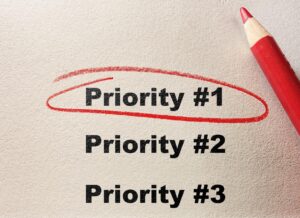Your LinkedIn about section could bring in clients while you sleep. Most people waste this space with corporate jargon or leave it empty. But getting it right means potential customers see your genius before they even meet you. Time to make your summary work harder.
Personal branding expert Amelia Sordell went from 0 followers to 200,000 followers and $4million in business revenue from LinkedIn by getting intentional about her profile and content. Her about section perfectly combines authority with relatability, turning profile views into paying customers.
Let’s break down exactly what makes it work, so you can apply the same framework to your profile and watch opportunities roll in.
The anatomy of the perfect about section on LinkedIn
The hook grabs attention fast. “Klowt builds personal brands” tells visitors exactly what she does. Four words that position her company as an authority while keeping language simple enough for personal brand clients to instantly get it.
Her origin story is powerful. “I founded the business after realising that the best leads came through people – not businesses. My then-CEO didn’t agree. So I built my own personal brand to prove him wrong. Fast forward to today, I have a community of over 300,000 and have generated $4 million off the back of my personal brand online.” The conflict with her CEO creates tension. Numbers prove results. The rebellious streak speaks to entrepreneurs ready to prove others wrong.
She adds personality and more credibility through specific details: “I’m a best-selling author, a mum, lover of tiny versions of normal-sized things.” The unexpected detail about tiny things sticks in your mind more than standard achievements.
Her spirit continues through stories: “Turn up at the airport and buy a one-way ticket? Let’s go. Random skydive on a Tuesday? Yes, please.” The casual language signals confidence while specific examples of spontaneity attract clients who value bold action.
Sordell closes with vision: “My goal in life is to collect a series of dinner party anecdotes I can tell when I’m 83 years old that make people smile and say, ‘Wow, she lived.’” This goes beyond business metrics to paint a picture of a life fully lived, appealing to clients who want their personal brand to mean something more.
Creating my summary with AI, using Amelia Sordell’s structure
Combine Sordell’s recommended structure with the below prompt in Claude to create a solid LinkedIn summary that will transform your profile. I tested this with my LinkedIn and Claude didn’t disappoint.
My LinkedIn summary went from a features-focused list to a story-driven pitch. The opener changed from listing what coaches want to the direct statement “Coachvox builds AI versions of coaches,” following Sordell’s clear positioning approach.
Where the original copy jumped straight into bullet points about client needs, the new version adds a personal origin story: “I started it because my coaching clients wanted more of me…” This introduces both problem and solution through experience rather than generic statements.
Instead of the vague promise that “top coaches have figured this out,” the revision shows specific impact: “Now hundreds of coaches use Coachvox to scale beyond their time.” This establishes social proof while maintaining authenticity.
My credentials shifted from implicit to explicit, adding “Forbes senior contributor writing about AI” to build trust, while personal details about powerlifting and nomadic living replaced generic bullet points about what AI can do.
Finally, rather than ending with a call to action to visit a website, the summary closes with purpose: “Our goal is to free 10,000 coaches from being part-time marketers,” mirroring Sordell’s focus on legacy and larger meaning.
Write your own magnetic summary
It’s your turn to write a summary that packs a punch and makes you memorable. Copy this prompt into Claude or ChatGPT to create your own powerful LinkedIn summary, personalizing anything in square brackets:
“I want to write a LinkedIn summary that attracts my ideal clients. Here are two examples that work well: [Paste Amelia’s summary] [Paste my summary].
Help me write a new summary that follows this structure but reflects my business and personality. Include: A powerful one-line opener stating what your business does, an origin story that shows why you started it, proof of impact and how you help clients, relevant credentials that build trust, unique personal details that make you memorable, a mission that shows bigger purpose.
Here’s my current LinkedIn bio: [paste your existing bio].
Additional details: Personal information: [give 2-3 unique facts about yourself], Business context: [describe what makes your company different]. Make it conversational and authentic while appealing to my ideal clients.”
Read through and edit until you’re happy, then head to LinkedIn and paste the new one straight in. Measure your uptick in new followers and enquiries when people understand exactly what you do and who you are.
Rewrite your LinkedIn about section to attract your dream clients
Your LinkedIn about section works harder when you nail these elements. Open with a strong hook that grabs attention. Tell your origin story with specific details that prove results. Add personality through unexpected details. Share your values through real examples. Close with a vision bigger than business.
The magic happens when you combine Sordell’s framework with your unique voice. Time to make your summary impossible to scroll past.
Read the full article here











